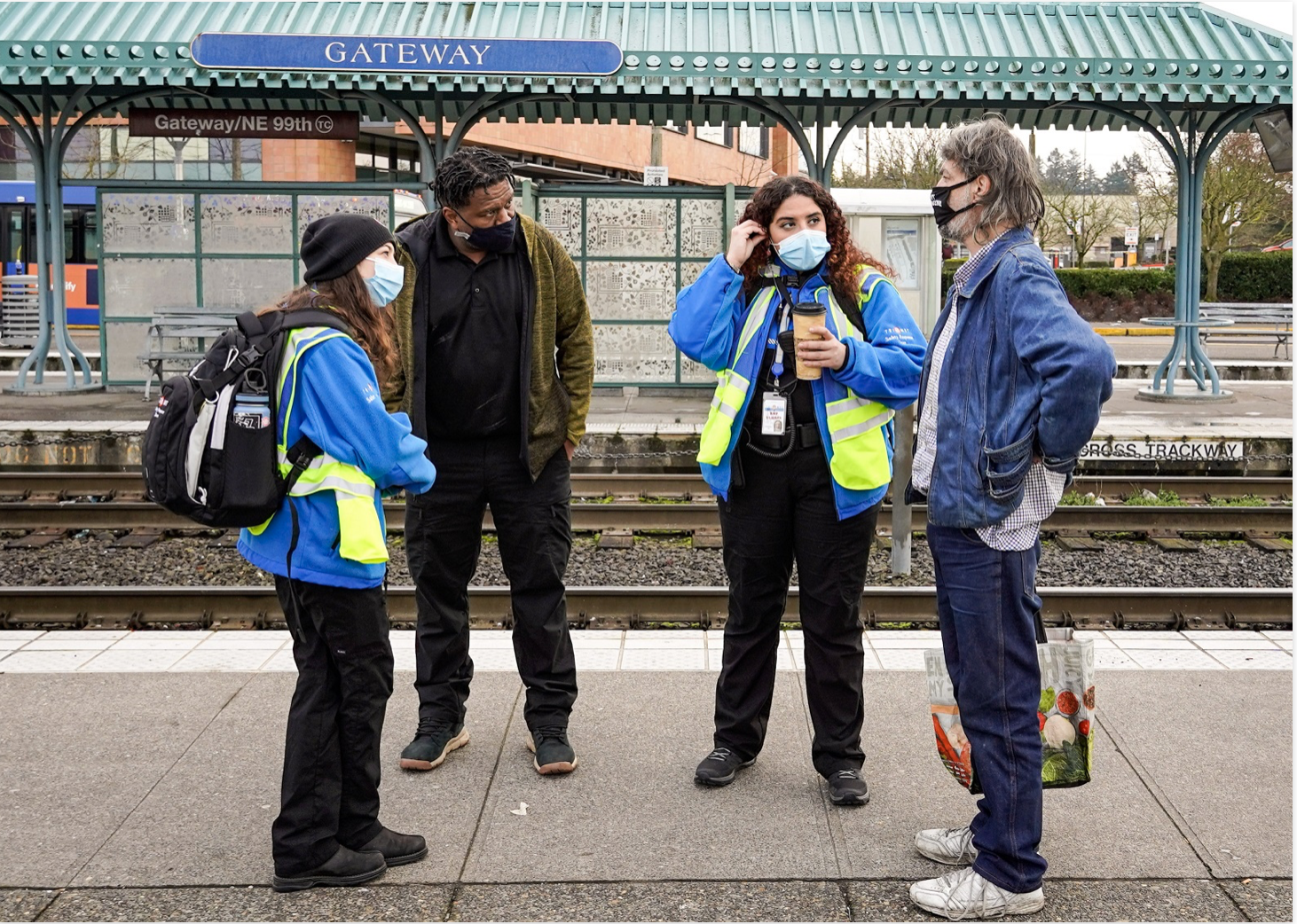
Building an equitable and effective public transit system requires that all people feel safe and comfortable using it. Unfortunately, that’s not the case in a lot of places – especially for women and people of color, who are most vulnerable to harassment and assault when using public transportation – and this can have a big impact on people’s mobility and ability to get around.
Madeline Brozen, deputy director of the Lewis Center for Regional Policy Studies at the University of California, Los Angeles, spoke last week at a Friday Transportation Seminar hosted by Portland State University’s Transportation Research and Education Center (TREC).
We can improve mobility and safety without furthering car-dependence. Owning a car is expensive, and many low-income people don’t have driver’s licenses at all.
Brozen has studied how transit systems can enhance the needs of women and people of color. Freedom of mobility is vital when it comes to accessing opportunities, and a well-functioning public transit system will be able to provide that freedom to the people it serves. In this seminar, she provided some insights on how people’s experiences and perceptions of safety on public transit influences their mobility and what cities can do to improve.
Although this seminar focused on women’s experiences, Brozen made sure to point out the importance of intersectional approaches to this research.
“If you’re only looking at gender, and not looking at gender and race or gender and income, you are likely looking only at the most privileged women,” she said.
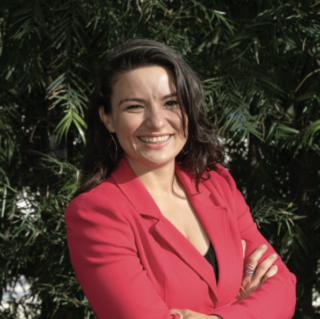
Through her research about safety on public transit systems around the world, including in her home city of Los Angeles, Brozen has surveyed students about their experiences to identify trends that can inform how policies should shift to better accommodate safety needs.
Experiences vary in different cities around the world, but researchers found women and people of color report feeling unsafe on public transit during the day and night at the highest rates.
People who feel unsafe using public transit may make a variety of behavioral changes that limit their mobility. These behaviors may include only traveling during the daytime, only traveling with someone else and avoiding certain stops or stations. (You can see some data from slides Brozen presented below, and the full presentation is available here.)
Perceived danger could also mean someone chooses to drive a car – if they have access to one. But in order to curb carbon emissions resulting from private transportation, we need to end car-dependency. Although Brozen’s research shows that driving a car does provide access benefits for people, especially low-income women of color, we can improve mobility and safety without furthering car-dependence. Owning a car is expensive, and many low-income people don’t have driver’s licenses at all.
Here in Portland, public transit activists have sought to make our transit system safer for all people. Bus Riders Unite, a transit activist group affiliated with environmental justice group Organizing People Activating Leaders (OPAL), and Youth vs. ODOT protesters have pointed out safety concerns inhibit the kind of public transit usage that’s necessary to meet carbon reduction goals.
Advertisement
Instead of increasing armed police presence, however, anti-racist and public transit safety activists have called on TriMet to minimize transit police funding and use other methods to ensure community safety.
During the 2020 reckoning against racist police brutality that spurred months of continued protests in Portland, TriMet made a commitment to shift funding away from Transit Police and toward alternative public safety services to keep riders and employees safe.
Recently, TriMet shared information about its new Safety Response Team, an unarmed group of people trained in conflict resolution who aim to connect people with community-based resources instead of punishing them.
However, critics have expressed skepticism about this new initiative, pointing out that members of the Safety Response Team are being trained by Portland Patrol Inc (PPI), a private security firm that has close ties with the Portland Police Bureau.
Advertisement
Brozen advocates for a nuanced approach to safety on public transit that takes different needs in different communities into consideration. People who live in low and medium density neighborhoods, for instance, need safety approaches for traveling longer distances than people who live in higher density neighborhoods and don’t have to travel as far. Something like TriMet’s Safety Response Team also should be fine-tuned to meet specific needs.
Making service more frequent so people don’t have to wait alone at stations or stops for long periods of time and improving lighting are two things that can make public transit more useful, accessible and safe.
The bottom line is: more resources need to be put into public transit systems. The more attention cities give to advancing public transportation in general, the better people from marginalized communities will be served.

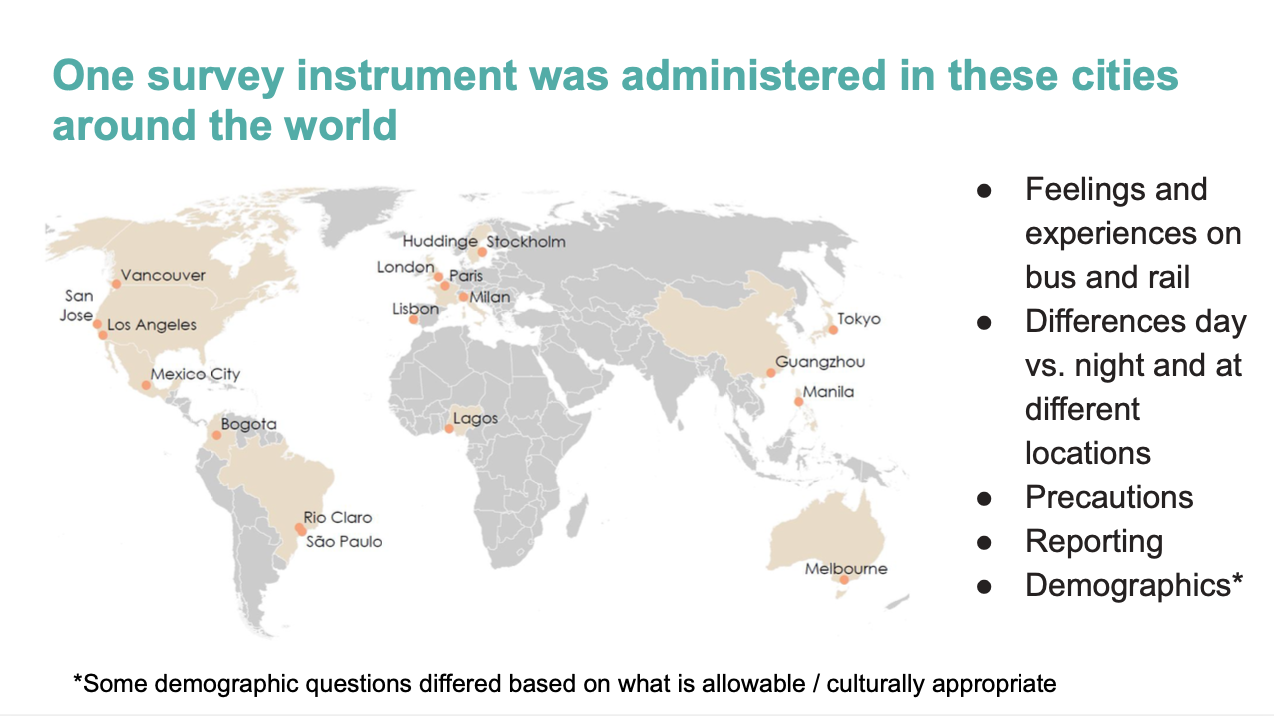
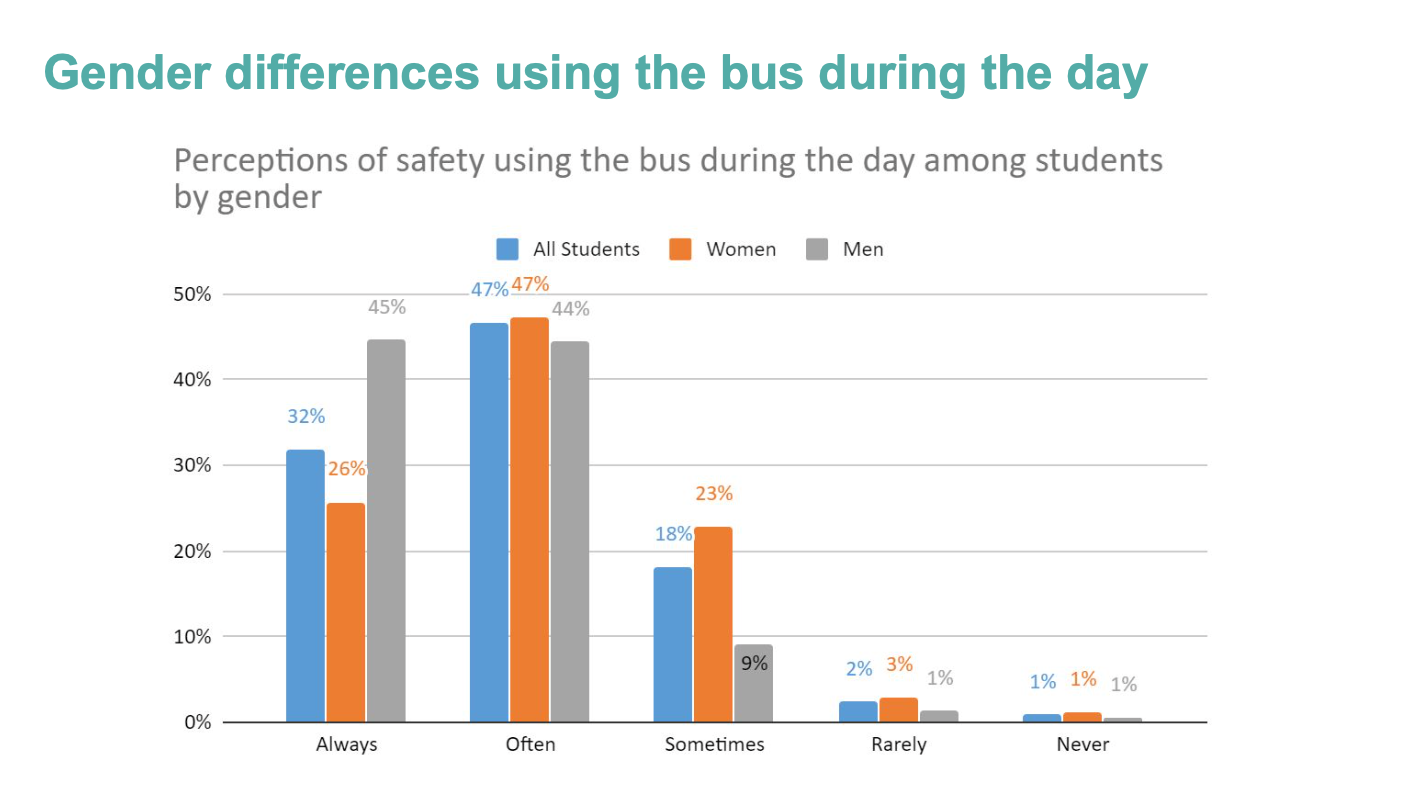
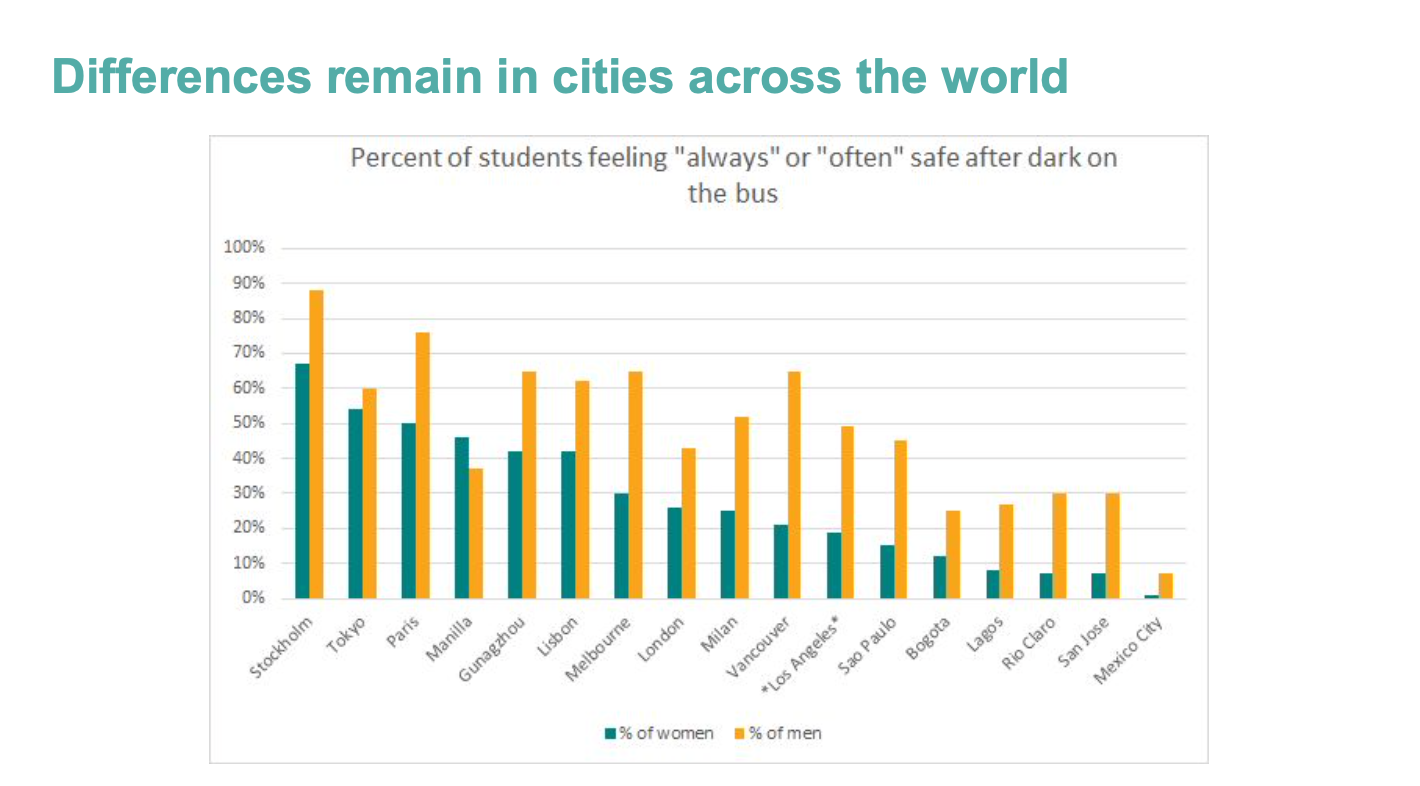
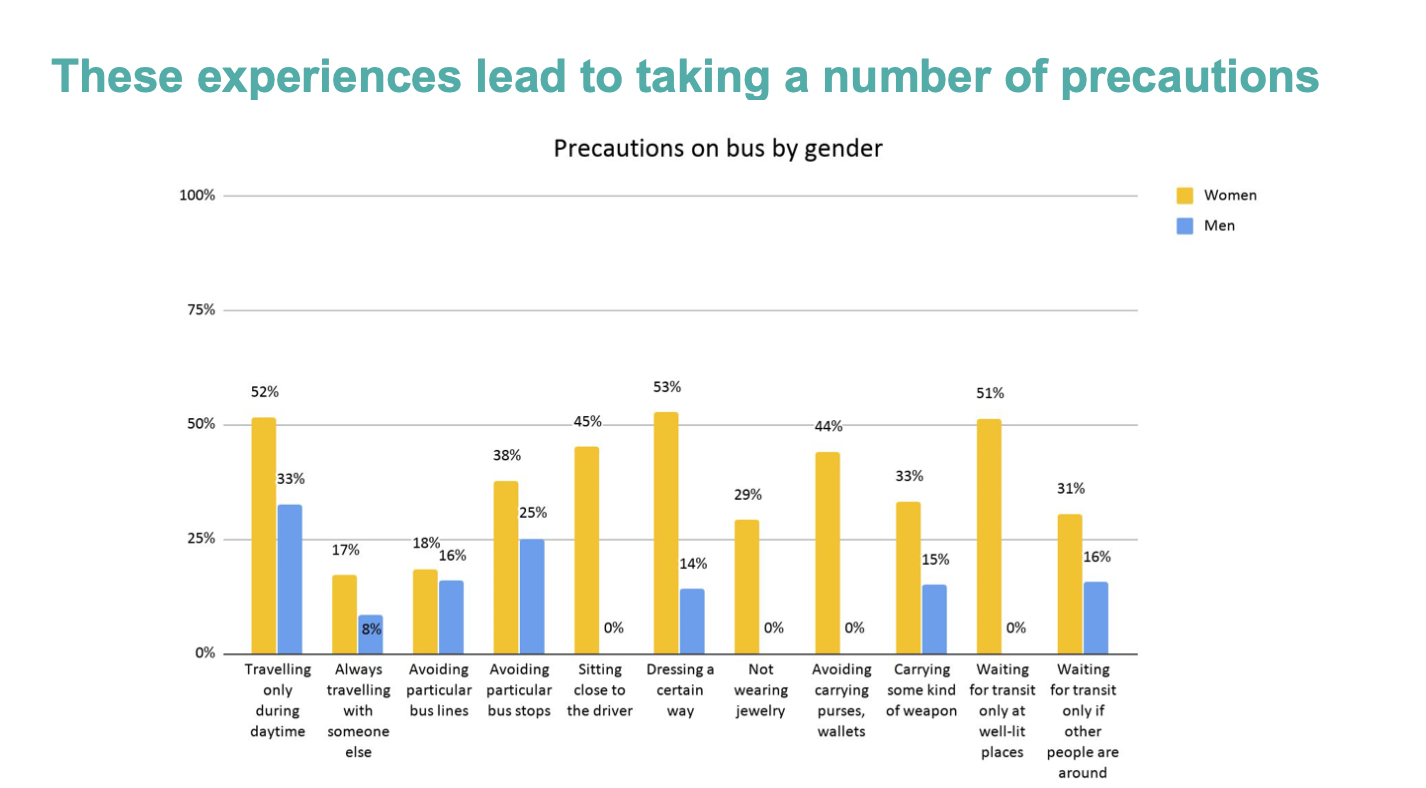
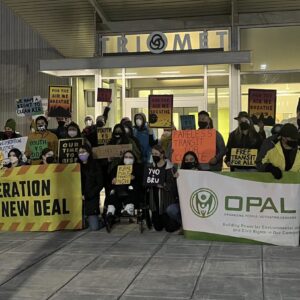
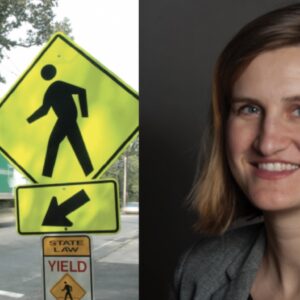
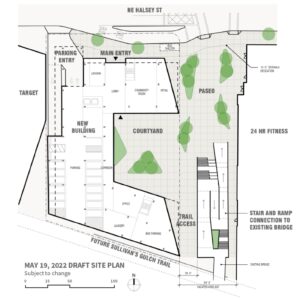
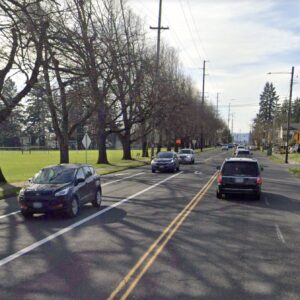
Thanks for reading.
BikePortland has served this community with independent community journalism since 2005. We rely on subscriptions from readers like you to survive. Your financial support is vital in keeping this valuable resource alive and well.
Please subscribe today to strengthen and expand our work.
I ride public transit all the time. Cleanliness is a big deal for me. On the bus, I will stand. If I sit down, it will be towards the rear of the bus but not at the very end. People get on, with cans and bottles, almost never paying, their clothes are absolutely filthy and plop themselves down in the front seats. In addition to bacterial issues from fecal matter, I’m actually worried about things jumping from them to me! On any transit, I check the seat before I sit down; I mean CHECK THE SEAT! If it is wet or discolored in any way, I move on.
On buses, drivers should be able to take a look at the person boarding and say ‘NO!’
All fares from each boarder should be collected before the bus moves!
People who ride public transit who are both dirty and non-payers not only hurt the system directly but also poison the experience for others. The description above is accurate and many people will not ride the system at all because of this.
Do you want to be on the street? Then be on the street and spare the rest of us!!!
Bus drivers are not putting their life at risk for challenging and excluding non-payers. They have nothing to personally gain and everything to lose.
okkkkkk. Well, what does THAT imply for the safety of passengers on board who have paid their fares if the guy driving the bus is at risk. Collect the fares, drive the bus. Train all riders that when they board they’re expected to have fares in hand. It’s not hard!
I live on 92nd and Flavel, and the closest MAX stop for me is the Flavel stop. At night it is dark and I have been harassed while waiting on the platform. So I will go down to the Foster stop which is farther away, but there tends to be more people around so I feel safer. I also don’t take the max altogether if it is dark out. I actually like riding the max, because it allow some quite time for me before I start my shift at work, but depending on my work schedule sometimes I just don’t feel safe doing so..
Maybe I’ve been really lucky, but I take transit often in Portland to get to work and have not had any experiences that made me reconsider doing so. I’m 30-something woman, and I often take the Max or bus back home after dark around 7pm or even later. In fact there are several positives that make me actually want to take transit more now: easy street parking near my closest Max station whereas before the pandemic it was packed; and on the days when I bike to the train, I can easily roll the bike aboard and lift onto the hanger, whereas before COVID the ridership was much higher and I never felt comfortable bringing my bike onto the train and maneuvering it around other people. The main problem with transit for me has been the reduction of frequency on the bus line I use to commute due to COVID. I do feel some unease in a mostly empty train car in winter after dark (as someone who grew up in huge cities lack of people always makes me feel less safe) but that’s more about my perception rather than my reality.
Anecdotally, I’ve heard from people in my life that “they won’t ride transit in Portland, it’s gotten too dangerous. Bad/violent stuff happen on there all the time.”
I’m curious if anyone has run the numbers to see if that’s the case. Of course, if your news is Oregonlive and Nextdoor, they are awash in horror stories. Does that data exist?*
*And, of course, there is the problem of dirty data. If enforcement/supervision has changed significantly, then the data may not be capturing reality and instead just demonstrating that fewer incidents are being logged.
Is your point that the women in this research have a faulty perception of their risk on public transit?
I suppose that you’re asking about crime statistics here, and I don’t have that data on hand. But “safety,” the actual subject of this article, takes into account riders’ perception of risk. That’s right: safety is a feeling.
From the research referenced in the article, the data regarding safety is clear: only 45% of men always felt safe taking the bus during the day, and no one else feels any better.
The point of this kind of study is to figure out who feels safe or unsafe, because people probably don’t want to risk their life just to get to work. If they don’t feel safe on public transit, they’ll be less likely to use public transit.
Of course I’d agree that the US should have better, more objective crime statistics. But I’m not willing to hold off on recognizing the impacts that the current system has: women feel unsafe on public transit. That’s a huge problem, if we want people to be able to get around! That’s a huge problem if we want to reduce the carbon footprint of society!
I first learned about the importance of “perception of safety” here on Bike Portland, years ago. Many articles focused on the benefits of comfortable bike routes, as opposed to ones that felt risky, even if the data did not prove the risk.
Part of the 8-80 movement in cycling is recognizing that many riders prefer separated bikeways, or bikeways with low car traffic. Vehicular style riding isn’t exactly like playing Russian roulette, and 3 foot wide bike lanes aren’t a death sentence, but BP has pointed out numerous times that most people aren’t “strong and fearless.”
It’s ironic, then, to see these comments, on BP, that devalue the perception of safety on public transit, as if all we need is to downplay the feelings of actual riders, and all will be well. How patronizing!
I can’t tell if this was meant to illicit conversation or if you just wanted to write a missive, push back from your desk, high five your cat, and yell, “Boojah! Another one owned on the internet!”
Of course perception matters. Of course I, and I hope other commenters, understand that that is most important. Here’s the thing: the people in my life who are telling me this haven’t ridden transit in years. They don’t know what it’s like first hand, rather, it’s a perception based on what they’ve seen on sites like Oregonlive and Nextdoor. I thought we all understood that social media apps and media companies very specifically push what gets eyeballs. Crime most certainly gets eyeballs, so those stories are magnified in those forums.
If the problem is there is really an uptick in crime/violence/filth on transit, then the policy prescription is addressing that then educating the public. If there has not been an uptick in crime/violence/filth on transit and this is a perception driven not by experience, but by interactions with media, then the policy prescription is outreach and education.
That’s why my question matters. Has anyone/agency actually done the research to determine what the problem is? Otherwise, we’re simply guessing. You had to make many assumptions to conclude I was dismissing people’s perception of safety. So let me be clear: I honor anyone’s perception of being unsafe on transit, on a bike, in a car, etc. However, if we’re trying to discuss the question posed in this post–“How can we improve safety on public transit?”–then let’s fully understand the problem.
Good points! Maybe I did make too many assumptions.
Did you read the article, though? You referred to the possibility that “this is a perception driven not by experience, but by interactions with media.” That doesn’t make sense to me, because the article is referring to surveys of actual transit users.
Some quotes from the article:
*”this seminar focused on women’s experiences”
*”Brozen has surveyed students about their experiences”
*”…researchers found women and people of color report feeling unsafe on public transit during the day and night at the highest rates.”
The article is not referring to media consumers, or your friends who haven’t ridden transit but do read O-Live. It was written very clearly.
I’m sorry your friends are potentially misinformed, but I don’t see how the possibility that they are misinformed should lead you to also discount the data from actual transit users.
So again, it sounds like you either didn’t read this closely, or you just don’t believe these women. If you think that the women who report feeling unsafe on transit are wrong, just say that! There’s no need to hide behind this theoretical people who don’t ride transit but are misled by the media. The very article we are arguing about does not even mention those people.
Ah! I think I see where our misunderstanding is coming from. You are referencing the research cited in the article which, as you pointed out, is of the perception of transit riders. This is important and meaningful and should help guide policy decisions.
In my original post, I was referencing the folks in my life (“Anecdotally, I’ve heard from people in my life…”) that are potential users, ie not anti-transit reactionaries, who have been convinced through their interaction with media/social media that transit is too dangerous. I wasn’t clear about that distinction, my apologies. To be clear, I didn’t “discount the data from actual transit users,” which would be one of the assumptions I was referring to you making.
So here we are like two boats in the night. You are referring to the data in the article (makes sense!) while I’m referring to a group of people that this article made me think of and who, I think, is another group of potential transit users. In other words, I was taking the content of the article and expanding to another related topic and wasn’t clear I was making that leap.
And, still, I wonder: has anyone collected the data about the reality on what’s going on on transit. Perceptions are certainly valid and those concerned need attention/action, but the reality is also important and I’m not convinced anyone actually knows what that reality is.
Ah! Resolved!
I do wonder, too. I’d have to guess that actual safety on public transit has gotten worse. Roadways, airplanes, and everywhere else people congregate in our country have seen a rise in anti-social behaviors, including crime. The pandemic sucks.
My perception that TriMet is straddling the line between unpleasant and unsafe is based on first-hand experience. I doubt TriMet is unaware that I and many others feel this way, but I do think it will be a difficult (and politically unpalatable) perception to reverse.
No matter what defunders may wish, less security is not going to bring riders back.
For starters, MAX platforms should be secured so that only those with valid fares can access them. Every other transit system in the world requires riders to purchase a fare before accessing the boarding area. Not Tri-Met! Anyone can mill about the platforms or get on the train and ride until a fare inspector boots them off. Very good odds that you will not get caught and the citations are useless on scofflaws.
I’m not sure this is true. I lived in Germany for two years, and fares were inspected onboard the trains, not on the platforms.
But Lazy Spinner has a point – we need more fare inspectors. (During my time in Germany, I estimate that the likelihood of being inspected was about 50/50. I can’t remember the last time I had my fare checked on the MAX.)
It would make sense for the fare inspectors to be trained with many of the same skills (de-escalation, etc) as the Safety Response Teams.
In the meantime, I opt for the bus, where there is a TriMet employee keeping tabs on the situation. This makes me feel safer than on the MAX, where in recent times I have encountered people selling/consuming drugs, drinking, etc on board. This makes me sad, as in pre-covid times I loved taking the MAX.
I can second this with my own residency in Germany. The city I studied in had pretty much the equivalent of MAX/streetcar – with stops in the middle of busy public areas that were equally impossible to cordon off. But yeah, they also had a lot more fare checking – mostly on the train.
Mostly irrelevant aside, I was surprised how many Germans would stay on those trains to get caught, get caught, and calmly just leave after. Like, they didn’t even try to get off at a different door of the train or an earlier stop/etc.
I ride every week day. In the last month or so, I’ve been “inspected” at least 2 or three times on MAX (two days in a row) & once in the morning on the bus(delaying it so I missed my connection, at that).
For starters we should not have fare based boarding on Trimet. It is horrendously inefficient and lowers usage of the system. We should do like Corvallis has done and replace fares with a household utility fee. For $10 per household per month we could eliminate fares at the time of boarding from Trimet, improving boarding time and increasing ridership at the same time.
Would fareless boarding make riders feel safer?
NO MORE TAXES! You use the Max you should pay for it.
By that logic, we should toll all our roads rather than funding them with taxes, right? And police and fire should be funded by fees on services.
So charge people even though they don’t use it? Haven’t we already been taxed once for it?
Has there ever been a problem that a leftist thinks they can’t fix using other peoples money?
Nevermind the incentives they create which exacerbate these problems. And don’t forget to eliminate or obfuscate the metrics that could be used to identify real solutions while relying on “science” that is little more than motivated reasoning leading to far-left propaganda (OPB I’m talking about you). Oh; and don’t forget to exaggerate “harm” in order to play on well-meaning but factually clueless folks emotions (fun fact; safety isn’t just a gender issue).
Why does bike portland continue to push leftist narratives like “defund the police” when it’s these sorts of narratives that so obviously exacerbate the problems of safety, theft, addiction, and untreated mental illness in our community?
Perhaps it has something to do with ideological bubbles; exacerbated by an absurd culture that claims that any speech that makes people uncomfortable is akin or even equivalent to violence.
The results of this sort of reasoning is likely a good example of the law of unintended consequences. If you think public transit is unsanitary and unsafe now; just wait and see what it would probably look like if fares were eliminated.
Portland has a large and growing population of people more than willing to mooch and degrade any all all public resources. “Solutions” that ignore this reality will tend to exacerbate many of the city’s problems.
This simply isn’t true… Seattle is a much bigger city than Portland and they use proof of payment fares, not fare gates. The Berlin U-Bahn also uses proof of payment, not fare gates, and that is a massive subway system for a very major city…
Agree; anyone who has ever used the light rail system in Portland knows this. Every stop barring those in Sullivan’s Gulch or maybe in some of the systems on the outer rim are located at-grade in the middle of the street.
Add that to the ridiculous assertion regarding every other transit system in the world, and there’s no way OP’s comment was made in good faith.
Yeah Oliver, that comment wormed its way around my head till I finally remembered San Diego and Paris, two cities with at-grade trains which have no turnstiles or passenger control. SD has ticket machines like the one at PDX.
Yeah but San Diego (or Paris) doesn’t have the same number of homeless or crazies walking around.
Lazy Spinner said that
“Every other transit system in the world requires riders to purchase a fare before accessing the boarding area.”
SD and Paris prove his statement is false. That’s all.
I’m not sure the numbers would agree with this assertion. It’s not just San Diego and Paris either, there are cities all across Europe with at grade rail systems with no turnstiles. It is myopic to assert that Portland is somehow unique in this, or is unique in having a housing crisis. Every major city in America is experiencing a housing crisis right now.
I think it should still be evaluated, though. The conditions that makes platforms like Hollywood and 82nd easiest to implement for fare gates is also the thing that makes them the scariest to be at if you encounter an insane person: only one path of escape. I would like to see Trimet build additional pedestrian access routes to these stations. They would eliminate the single-point failure (elevator down for maintenance, for example), and improve the walk shed. Hollywood could have a ramp leading west to the 39th overpass. 60th could have a bridge over the tracks with a MUP connecting to NE 53rd, and 82nd could have a bridge over to NE Jonesmore. Additionally, every one of these stations should extend under the adjacent overpass so that pedestrians can get to either side of the street for bus transfers.
This is a great topic! My household driving trips/week are much higher that they should be. Th Max has not felt safe for my wife or daughter since covid. This was partially fear about the virus and partially fear about how unruly/dirty the MAX had become. Now it is mainly the sketchy/uncomfortable/dirty condition that keeps them away. I try to convince them to bike, but literally every route out of our inner north Portland neighborhood has seriously sketchy gaps that are non-starters. It is so frustrating to have supported/advocated for improvements over the years and to have had so much infrastructure built, but it all so pointless without real commitment from the City. They do not maintain the bike infrastructure, they don’t keep cars off it, they don’t control the streets (speeders, distracted/intoxicated drivers), and they don’t maintain civility on the MAX.
This is remarkably similar to my family’s situation. If two rando commenters on Bike Portland are having this experience, I’d imagine it means there are many more around town experiencing the same barriers. Perhaps the most frustrating part is that the fixes–have an official presence on transit, keep things clean, sweep bike lanes, improve critical bike infra gaps–are pretty darn low hanging fruit. It is, indeed, so frustrating that this is where we are right now.
I miss “The City that Works”. The Portland of 10-15 years ago was pretty good at addressing these types of problems, although maybe they relied on low-hanging fruit and conflict avoidance to our current detriment!
I was at a park the other day and my kid had to use the bathroom. We opened the door to a porta potty, which I fully expected to be an overflowing cesspool, and it was clean! In fact, according to the log it is cleaned every day, just like the sign said it should be.
I was genuinely shocked, but also happy. That’s how low the bar has been set.
It may be that removing security from transit makes some “marginalized” people feel safer, but I suspect it will make most feel even more vulnerable. And if we want to have transit continue to exist, “non-marginalized” people need to feel safe enough to use it too. The system simply cannot work if the only riders are those who have no choice.
The question of “armed security” is a bit of a red herring, as I don’t recall ever seeing an armed fare inspector. It would be great if TriMet is able to make riders feel secure by using a softer touch. But so far, at least, it doesn’t seem to be working.
Oh I don’t know, maybe turnstiles, fares, inspectors, you know, a real transit system…
We have a use to be tourist train, now just a derelict system, how hard is it to do what 99% of transit systems do in the modern world?
Our has climate and equity inclusivity built in.
Stop saying enforcement is “racist” or whatever and then just throwing up your hands in the air and doing nothing.
That would be the most impactful change TriMet could make in the short term. Every 15 minutes simply isn’t very frequent. 4 of the 5 MAX lines are designed to run every 7.5 minutes, TriMet should aim for at least every 10 minute headways on each line and every 12 minutes for frequent bus lines.
Doubling the frequency without doubling ridership would drive per passenger and system-wide emissions up. Also, drivers are expensive and difficult to find — TriMet is already reducing service due to a driver shortage.
I agree that higher frequency would make the system much more usable, but I think the main thing keeping riders away these days is the perception of safety.
Trimet shouldn’t be allowed to spend another cent on MAX capital projects until every line is running 10 min or better headways at peak and 15 minute off-peak. If we can’t sustain those levels of service, we shouldn’t be building expensive high-capacity rail transit.
While you are obviously criticizing TriMet based on a perception that they prefer prestige projects to mundane and incremental service improvements, I’m sure you must realize that this position doesn’t make a lot of sense.
If one transit line has low or episodic ridership and can’t possibly justify frequent headways, that has no bearing on whether ridership in a different corridor can justify a MAX line.
Can you name a corridor that would justify a MAX line, given current ridership on the system?
Vancouver. But since that’s more an extension, perhaps not. However, the headways on the least-used bus line would not be a factor in my assessment.
The problem is TriMet needs capital projects to fix the existing system to be able to sustain those higher headways (like the Better Red project right now). Problem is they aren’t as sexy unless they’re expanding the system and therefore there are typically not a lot of federal funds available for those kinds of projects.
The people of Portland will never abide by the tough action required to restore order and civility on MAX or the rest of the city because it feels yucky. We’d rather install HD cameras, signs, fences, barricades, passive aggressive ad campaigns, remove trees, install prison lighting everywhere before we actually enforce rules or regulations with safety officers. We already have all these rules on the books. I am pretty sure smoking crack and being aggressive are already prohibited on transit property and yet it is happening all the time. We just have ZERO enforcement because we don’t want to hurt anyone’s feelings, especially a SJW with a camera and an axe to grind. And lest anyone trot out the whole “it’s a systemic problem” argument, go to Toronto or Denver and tell me how we compare. It is shameful and we only have ourselves to blame.
We just got back from a trip to San Diego, and the experience riding their Trolley system (which is nearly identical to MAX as far as rolling stock and station design goes) was night and day. The San Diego trains were clean and comfortable, and we didn’t have a single negative encounter.
That’s what happens when you care about your customers more than the latest political fad.
This is a good example of journalism without facts. Focusing on how people ‘feel’ about safety plays into the typical fear-mongering that we see in the media. The first question one always must ask when discussing any threat is ‘what are the facts?’ or in this case ‘what are the statistics regarding my safety on public transit?’. Absent that, what we have here is a long discourse with no real foundation in reality.
Hi Steve, the lecture this article covered was titled “Addressing Gendered Harassment and Wormen’s Travel Needs,” the speaker, Madeline Brozen, is with UCLA, and she presented a lot of data. The BP article links to the lecture.
The lecture got me thinking about the very last time a man masturbated in front of me in public. This is something that happened to me so often when I was young (usually in bus and train stations) that I’ve lost count of the number of times. But I remember the very last time, I was an old broad, 37.
I walked up to his car window and watched him. As you can imagine, that went over real big and he left after about 2 seconds.
The thing is, that’s something a 37 year old woman can do that a 12 or 13 year old girl can’t pull off. So I thought both the lecture and Taylor’s article were interesting and relevant.
Good lord. That is awful.
In most cases, I’d be in full agreement. But:
The reality is that most people are not grounded in reality. They’re grounded in feelings and biased perceptions. So I think it’s perfectly reasonable to report on those, particularly when they have direct real-world affects on something like transit usage.
I agree with you and that is why so much of our public discourse is both fraught and unproductive.
“The reality is that most people are not grounded in reality. They’re grounded in feelings and biased perceptions.”
And it is perfectly reasonable to call it out when it happens, lest we diverge into absurdity.
Yeah, humans a notoriously bad at accessing risk/danger. People afraid to fly but completely ok driving around. 30k-40k people die evey year in the US in car crashes. How many die in plane crashes? A couple commercial jets a year & several small private planes, so what, say 2, maybe 3, thousand-world wide.
Yes, while the perception of risk is real and affects people’s behavior. One really, really must ask “is the risk itself real or as severe as believed?”. Everybody understand the security theater of the TSA, right?
I would rather we spend the money fighting real dangers, rather than wasting time and money one the perceived one(s).
“[N]o real foundation in reality” is an incredibly dismissive way to describe a presentation focusing on women’s expressed feelings about public transit safety. The reality of their feelings is right there in front of you (unless you also think that the research’s author, also a woman, has fabricated the results).
Also, more generally, if you’d like people to use public transit, you should absolutely be concerned about their feelings! Do you really think that people are going to take transit if they fear it???
Madison Avenue has figured out how to make people buy all sorts of crap. Do you think people are eating Taco Bell because of the nutritional content? Do you think people are buying SUV’s because they need the ground clearance to get their kids to soccer practice? Do you think NFT’s are popular because people have rationally thought through the value of “purchasing” jpeg’s for their profile photo?
Feelings are fundamental, Steve. Any policy, even a good policy like public transit, that fails to take humanity’s complex emotional life into account will probably fail.
Yes, feelings are fundamental, but they should not be ‘foundational’ for productive discussion.
Can you explain the difference?
In creating public transit policy, we are in the situation of trying to encourage an optional good behavior (using public transit). Locally, this good behavior is sort of opposed to a more popular alternative (owning and driving a car) which is economically, environmentally, and physically unhealthy, but which has powerful marketing and popular sentiment in favor of it.
How are we to craft an optimal policy for increasing transit use if we preference some set of crime statistics over the expressed feelings of the people we are trying to incentivize?
People don’t like to eat their vegetables, even when the vegetables taste okay. I don’t think anyone would eat their vegetables if the vegetables literally put them in fear of robbery, rape, or death.
In other words, the relevant facts of this issues are exactly these reported feelings that “transit feels unsafe.” If transit agencies fail to address those feelings, ridership will be lower. And that doesn’t really depend on whether or not a BP article about transit user surveys also include statistics about crime on transit.
I wouldn’t say that the real prevalence of crime is unrelated, but I just cannot believe this insistence that BP should frame this article around “well, actually, you’re wrong about feeling unsafe because transit is quite safe, as proved by this list of statistics.” How patronizing!
In that case, we should really break this down into which “type” of man causes the most feelings of fear. Black men? Hispanic men? White men? Feelings matter!
This kind of thing happens so often:
1. Activists tell Trimet that safety is a concern.
2. Activists tell Trimet not to have armed safety officers.
3. Activists tell Trimet that they don’t like its new unarmed safety officers, either.
From the Mercury article:
“Saddled with backpacks full of snacks and first-aid supplies, the 24-person team is unarmed, trained in de-escalation, and stationed at various transit centers, stops, and bus and MAX lines to interact with riders. . . Safety Response Team members are expected to intervene when they see inappropriate behavior, using conflict resolution training, de-escalation skills, or other social skills to address and end the unwanted behavior.”
That doesn’t sound too bad, to me.
I don’t know what Trimet is supposed to do, at this point. (Though hiring Michael Stradley seems like a complete own-goal, that’s the fault of PPI, not Trimet, which immediately asked for PPI not to use him.)
Perceived and real safety are tricky issues. If we’re honest, a significant percentage of people will feel unsafe just because someone belongs to a number of racial groups or is poor.
Having said that, harassment is a real thing, and even when that isn’t specifically an issue, most people don’t like dedicating headspace to figuring out who they have to worry about.
Just as dealing with motorized traffic is an inherent part of cycling for real transportation, dealing with people is an inherent part of using transit. Likewise, just as a game plan of getting everyone cycling based on being separated from cars has been and will continue to be unsuccessful, I would expect a similar lack of success in transit — or even less given the high level of resistance to mechanisms that involve judgment (i.e. that will sometimes be implemented in inequitable ways), especially when frequent encounters with chemically altered weirdos is thrown in.
Interesting, most of the people I see “behaving badly” on the train are in the majority racial group.
TriMet management, and let’s point at former ODOT head which is now chair of the Board, Warner, who doesn’t care about the safety of passengers and in many instances the drivers either. Even before COVID customer safety was never a priority for Warner and the Board. It’s all about building pretty trains and the infrastructure that surrounds the train tracks.
I’m forced by my employer to start having to go back to the office downtown soon. I’m no shrinking violet, but anyone who’s high on some drug can ruin a person’s life. We continue to see it in the news and we continue to see it mentioned in these very forums.
Until TriMet puts safety first, we’ll never have a high quality and useable transit system no matter the amount of press releases TriMet puts out claiming otherwise.
Proof is in the Pudding as my grandma used to say.
If we’re honest, some “progressives” vilify women in the name of leftism, #metoo be damned.
Fare Enforcement would be the most helpful.
Oh but we can’t do that in “Portland Nice” town. We might offend someone not paying their fare. You know, enforcing existing rules is beyond the politicians and social just warriors in this town.
I came to Portland 30+ years ago for work and it had a nice “small town” feel about it (I grew up in a town of <5,000) and it was enjoyable. Raised a family and was looking forward to retiring here.
Now, I hate to say it, but it's a sewer. Every day I go out I see the garbage that is now surrounding us. I never know when walking down the sidewalk in the dark what I'll step in.
Once work and family obligations are over then I'm moving. Don't know where, could be in the Metro area, but OUT OF PORTLAND!
More far left silliness from bike portland. Safety and security is wanted but we can’t have it because law enforcement is evil. No wonder no one wants to ride public transit in Portland anymore.
My car is in the shop this weekend. Beautiful day on Saturday, let’s go to the cool Umbria coffee shop downtown from the outer SE. The bus took FOREVER to get there. I can’t read on the bus because I get motion sickness. Got off to switch to MAX. Faster, but with the assortment of mental health/drugs/phone yellers onboard. Was still not feeling great from my experience, so I got a smaller to go order instead of sit down and enjoy coffee. Crazy dude defecated in the park not 60 ft away. Threw my coffee away and got an Uber back. Just my luck I guess, but TriMet won’t see my fare $ for a long time… It’s either car or Uber for me and bike strictly near my home for recreation and not transport.
Portland is a mess. We need to vote in different leaders who care about livability for ALL! Election is in May. I’m not voting for any incumbents as I feel they have failed us.
Nor, statistically speaking, is anyone else.
https://www.oregonlive.com/news/2022/01/tiny-fraction-of-portland-voters-say-theyd-re-elect-commissioners-jo-ann-hardesty-dan-ryan-over-generic-opponent-poll-finds.html
***[Moderator: deleted first clause, argumentative]*** it sounds a bit like Mad Max.
I think TriMet is just scratching the surface for what safety means & costs in today’s political climate. As an example, look at Blazer games: they are staffing train cars with TriMet security/fare inspectors after the games and shepherding them to at least Pioneer Square, westbound. I haven’t ridden eastbound from a game recently so maybe its similar. TriMet isn’t kicking people off, just making passengers feel safer with their presence.
Alternatively, they could enforce the existing rules and remove the individuals causing people to feel unsafe.